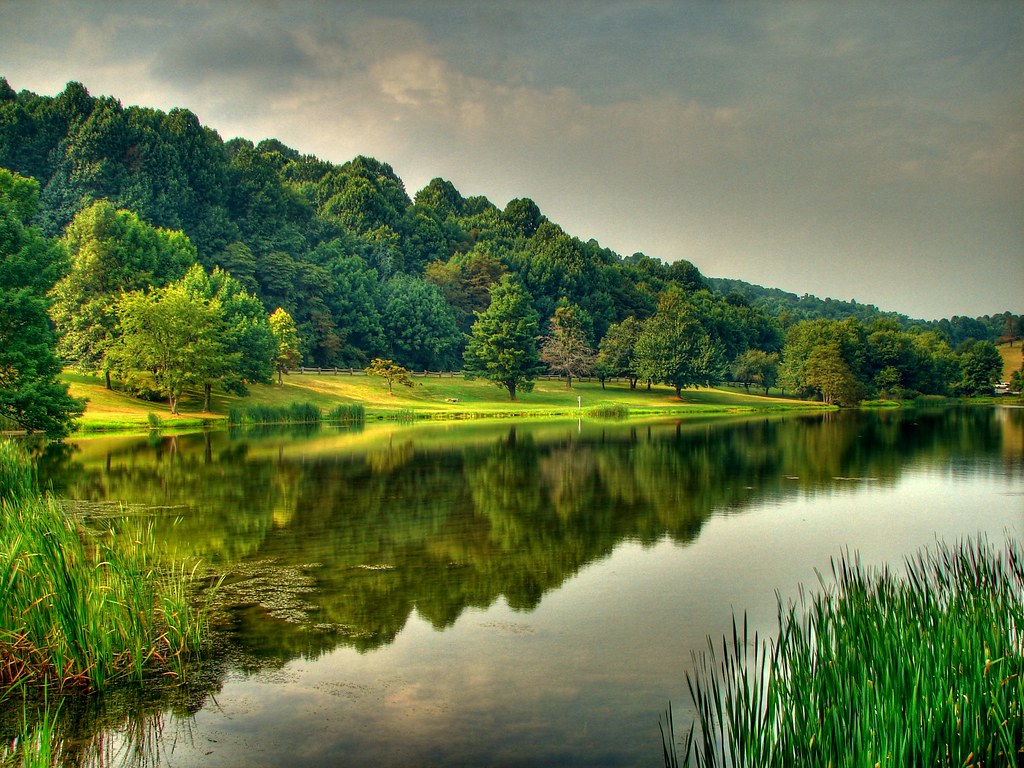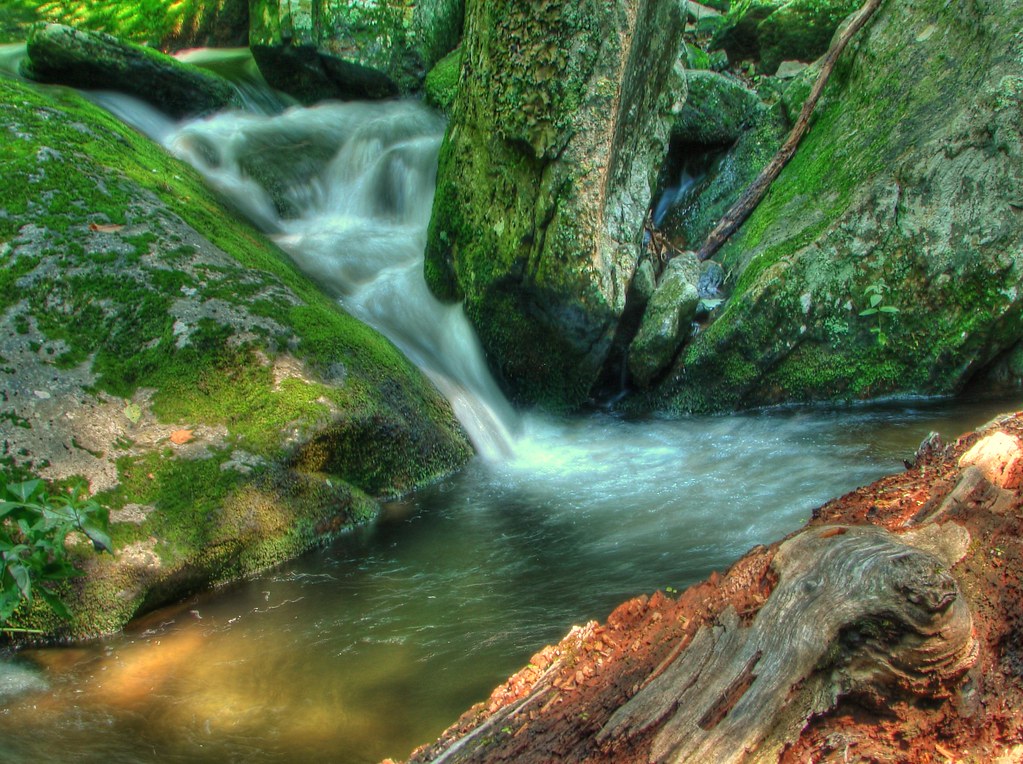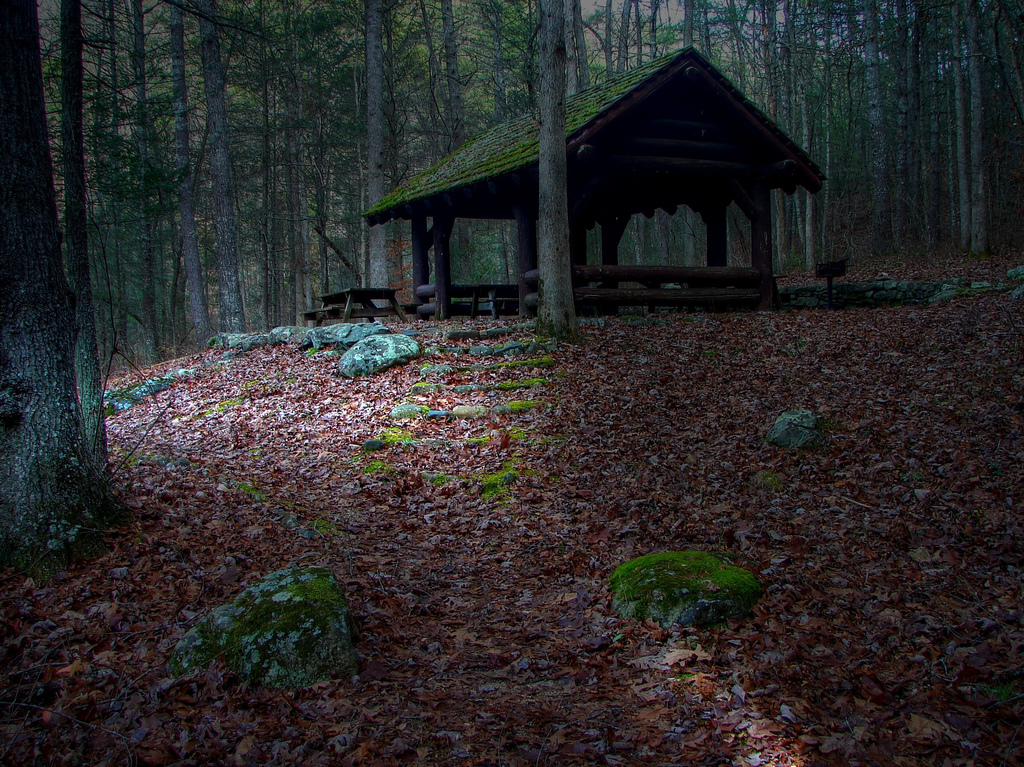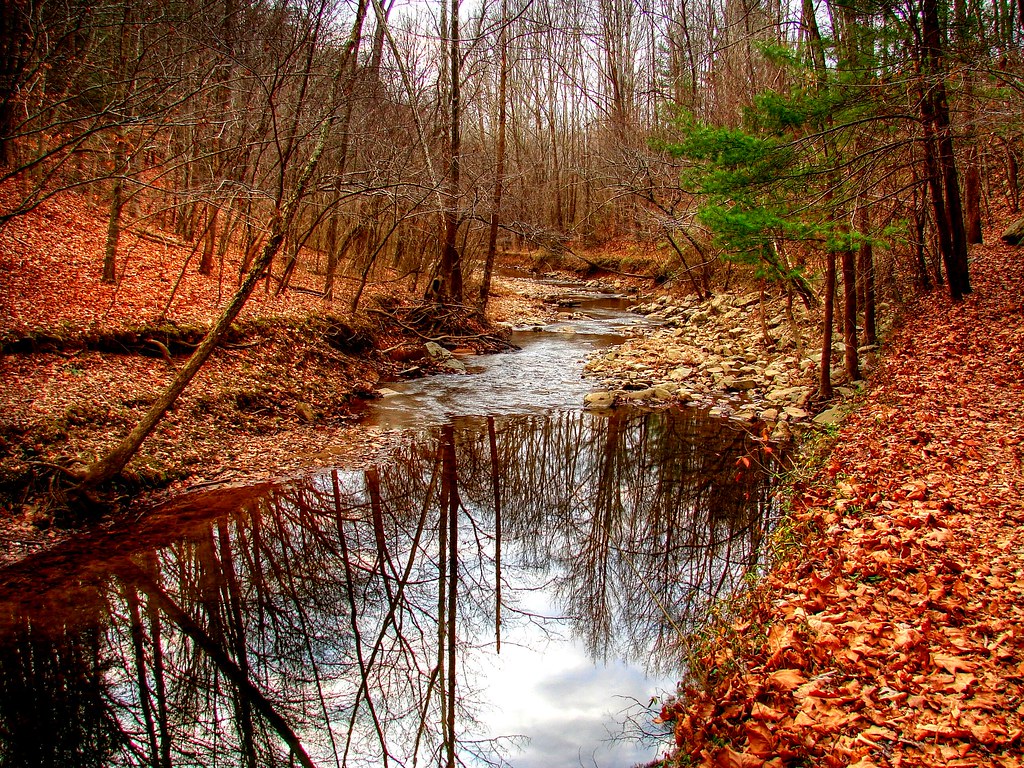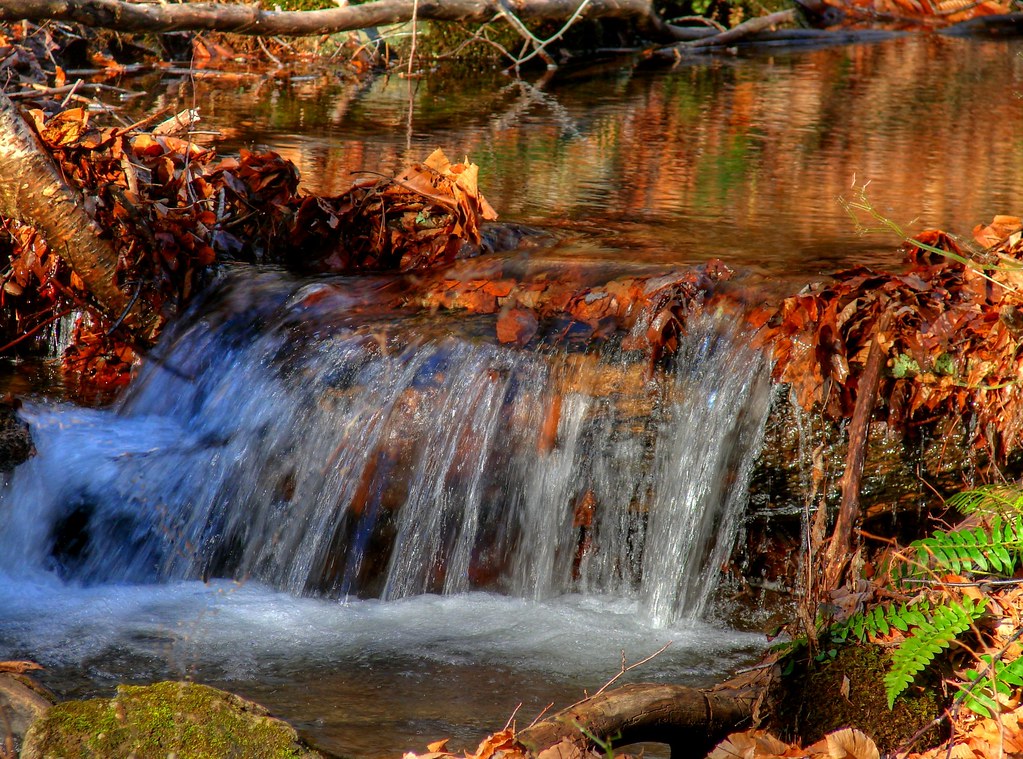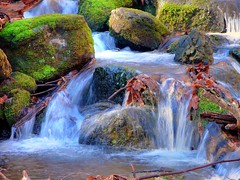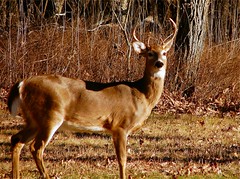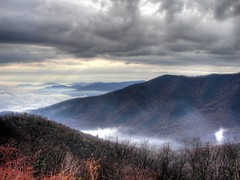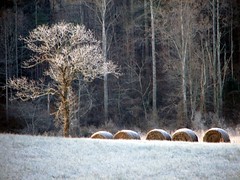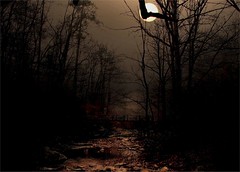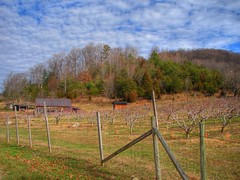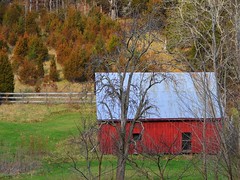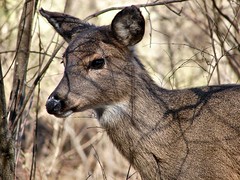 For Immediate Release: Ararat, Virginia, January 9, 2007
For Immediate Release: Ararat, Virginia, January 9, 2007
Tom Perry is pleased to announce publication of Stuart’s Birthplace: The History of the Laurel Hill Farm. Perry hopes to have the book available on February 6, 2007, J. E. B. Stuart’s 174th Birthday.
This book tells the story of the farm in Ararat, Virginia, that was the birthplace and boyhood home of Patrick County’s most famous son James Ewell Brown “Jeb” Stuart and the people who lived there.
In over 250 pages will tell the story of Stuart’s family from their arrival in North America through 2006 with a seven page bibliography and index. Laurel Hill’s history begins with prehistoric times including information on the Native-Americans, the American Revolution, Antebellum Farm Life and the life of J. E. B. Stuart, who served in the U. S. Army and fought against it in the Confederate Army of Northern Virginia as commander of Robert E. Lee’s cavalry in the Civil War.
The book reveals the lives of the women of Laurel Hill such as Elizabeth Perkins Letcher Hairston, who saw her husband, William Letcher, killed by Tories in the American Revolution and then married George Hairston of Henry County. The book tells of her daughter, Bethenia, who married into the Pannill Family and was grandmother to J. E. B. Stuart. The book tells of the life of Stuart’s mother Elizabeth Letcher Pannill Stuart and J. E. B. Stuart’s widow Flora Cooke Stuart along with information about the Stuart children and their father, Patrick County Attorney and politician Archibald Stuart.
The book tells about the Laurel Hill Farm after the Stuart’s left it in 1859 dealing with the history of the Patrick County community of Ararat with stories of Revered Robert Childress “The Man Who Moved A Mountain” and the midwife made famous by the cabin along the Blue Ridge Parkway, Orleana Puckett. The book concludes with a chapter on Perry’s personal work to preserve the site along with the preservation interest of the Brown, Dellenback and Mitchell families of Ararat, Virginia.
The book may be ordered at
http://www.freestateofpatrick.com/book.htm or by check payable to Tom Perry P. O. Box 50 Ararat, VA 24053. The cost is $25 plus $5 tax and shipping.
One dollar from the sale of each of Perry’s books will go to the preservation efforts at Stuart’s Birthplace in Ararat, Virginia, owned by the J. E. B. Stuart Birthplace
www.jebstuart.orgPlaces to hear Tom Perry speak on his new book
Stuart's Birthplace: The History of the Laurel Hill Farm
February 10, Arts and Antiques Mall 10 a.m. until 5 p.m. beside Lowe's Grocery Store in Stuart, Virginia, as part of the J. E. B. Stuart Birthday Celebration.
March 7, Surry County Civil War Round Table at the Mount Airy Public Library on Rockford Street in Mount Airy from 6:30 p.m. until 8 p.m.
March 10, Bassett Historical Center, 3960 Fairystone Highway in Bassett, Virginia, from 11 a.m. until 2 p.m.
March 11, Martinsville-Henry County Historical Society 3-5 p.m. Pythian Building adjacent to Old Henry County Courthouse in downtown Martinsville, Virginia
Biographical Information on Tom Perry can be found at
http://www.freestateofpatrick.com/tomscorner.htmHistorian Thomas D. Perry is the Founder of the J. E. B. Stuart Birthplace and hold a BA in History from Virginia Tech (83) He is the author of Ascent To Glory: The Genealogy of J. E. B. Stuart ($20) and The Free State of Patrick: Patrick County Virginia in the Civil War ($30). Both books ($40). Stuart’s Birthplace: The History of the Laurel Hill Farm ($30) are available on Perry’s website or by sending check payable to Tom Perry P O Box 50 Ararat VA 24053.
Perry speaks all over the country on topics related to J. E. B. Stuart, the Civil War and Patrick County history. You can see the latest events by visiting the following webpage
http://www.freestateofpatrick.com/coe.htm. Perry will speak to any church, civic or school group in Patrick County free of charge.
Perry was the recipient of the George Waller Sons of the American Revolution Citizen of the Year in 2004 for Patrick and Henry Counties and the North Carolina Society of Historians Award for a magazine article on J. E. B. Stuart’s North Carolina Connections in 2005. In 2006, the J. E. B. Stuart Birthplace honored the Perry Family for its work in preserving Stuart’s Birthplace.
Perry produces a monthly email newsletter about Patrick County History from The Free State Of Patrick Internet History Group, which has over 350 members.
Contact Information
Tom Perry
P. O. Box 50 Ararat, VA 24053
276-692-5300
freestateofpatrick@yahoo.comTable of Contents For Stuart’s Birthplace: The History of the Laurel Hill Farm
Foreword “Home”
Part One Journeys To Eden
Chapter 1 The Hollow: Ararat Virginia Before The Stuarts
Chapter 2 The Immigrant: Archibald Stuart (ca1697-1761)
Chapter 3 The Major: Alexander Stuart (1733-1823)
Chapter 4 The Judge: Alexander Stuart (1770-1832)
Chapter 5 The Patriot: William Letcher (1750-1780)
Chapter 6 The Daughter: Bethenia Letcher Pannill (1780-1845)
Part Two Laurel Hill
Chapter 7 The Father: Archibald Stuart (1795-1855)
Chapter 8 The Mother: Elizabeth Letcher Pannill Stuart (1801-1884)
Chapter 9 The Stuarts and Mount Airy: Connections To Surry County NC
Chapter 10 The Children of Archibald and Elizabeth Stuart: J. E. B. Stuart’s Siblings
Part Three Stuart of Laurel Hill
Chapter 11 Son of Southwest Virginia: James Ewell Brown Stuart (1833-1850)
Chapter 12 Soldier of the United States: James Ewell Brown Stuart (1850-1861)
Chapter 13 Soldier of the Confederate States: James Ewell Brown Stuart (1861-1864)
Part Four Preservation
Chapter 14 The Wife: Flora Cooke Stuart (1836-1923) and her children
Chapter 15 Laurel Hill and Ararat Virginia After The Stuart Family
Chapter 16 A Personal Preservation
Afterword “Walk This Hallowed Ground”
Appendix: The Laurel Hill Land Transactions
Records of the Slaves and Free Blacks
Bibliography
Index
 It’s winter time. Time to hang up the hiking boots and snuggle up indoors, right? Well, not necessarily. Here in the Blue Ridge Mountains, we are blessed with many mild days in winter, perfect for hiking. But even when there’s a nip in the air, frost in the trees, or maybe snow on the ground, a winter’s day hike can offer many rewards.
It’s winter time. Time to hang up the hiking boots and snuggle up indoors, right? Well, not necessarily. Here in the Blue Ridge Mountains, we are blessed with many mild days in winter, perfect for hiking. But even when there’s a nip in the air, frost in the trees, or maybe snow on the ground, a winter’s day hike can offer many rewards. nd I love to discover dried seed pods, interesting rocks, growth patterns on downed logs, lichens. The skeletal shape of an oak or walnut or other deciduous trees have a symmetry and shapeliness that is unsurpassed. Even patterns of frost on a muddy embankment can add interest. The winter landscape is beautiful in its way.
nd I love to discover dried seed pods, interesting rocks, growth patterns on downed logs, lichens. The skeletal shape of an oak or walnut or other deciduous trees have a symmetry and shapeliness that is unsurpassed. Even patterns of frost on a muddy embankment can add interest. The winter landscape is beautiful in its way. Blue Ridge Parkway and other national and state parks may close to traffic. On milder days the agencies that manage trails can guide you to the best conditions. Keep in mind that park facilities might be closed for the season even when trails are open (meaning restroom facilities may night be available). Walks along a closed and snowy Parkway can afford some breathtaking scenery and stunning photography.
Blue Ridge Parkway and other national and state parks may close to traffic. On milder days the agencies that manage trails can guide you to the best conditions. Keep in mind that park facilities might be closed for the season even when trails are open (meaning restroom facilities may night be available). Walks along a closed and snowy Parkway can afford some breathtaking scenery and stunning photography. t and have to stay warm.
t and have to stay warm.







